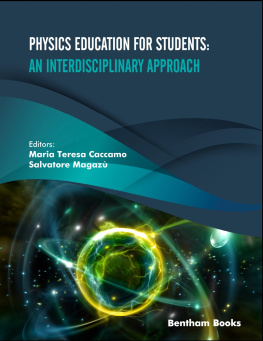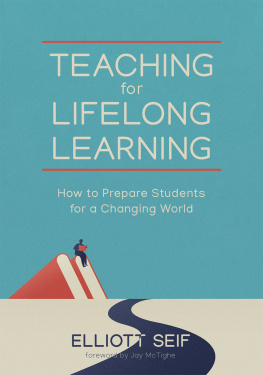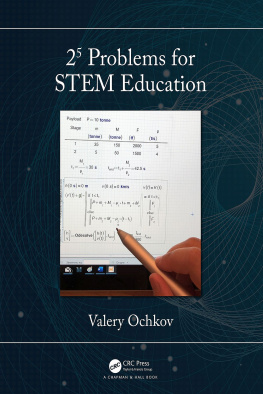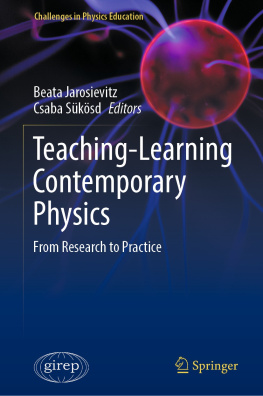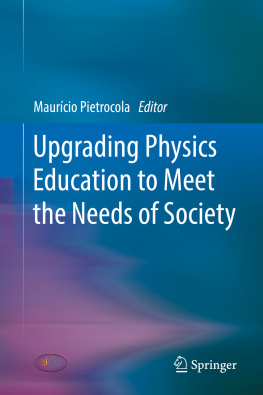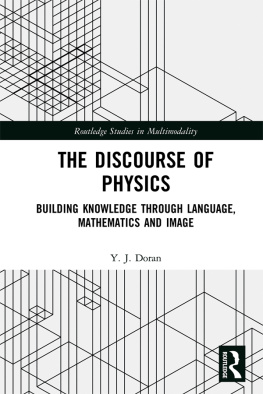1 Department of Physics and Astronomy, University of Pittsburgh, Pittsburgh, Pennsylvania 15260, USA
Abstract
Expansive framing, which positions students as participants in larger conversations that span time, place, people and disciplines, can be a valuable approach for designing curricula and learning experiences, to help students learn physics through an interdisciplinary approach. This chapter reports on the efforts to use expansive framing as a guiding principle while transforming and revitalizing an introductory physics laboratory class. This chapter, describes student experiences with two central elements of the lab course that are strongly influenced by the concept of expansive framing and related to interdisciplinary learning. First, we sought to incorporate and emphasize experiences related to the students real-world and professional experiences, such as connections between biology and physics, that will be interesting for the health-science majors who take the lab. Second, we sought to promote discussions between students and their graduate student instructors about the epistemology of experimental physics, which we refer to as the nature of science, which is an important interdisciplinary goal for the lab class. We explore the need, design, and implementation of these two elements of the lab course by analyzing student interviews and coursework. Consequently, we propose that using expansive framing for the design of student learning should be considered a best practice for implementing introductory college physics laboratory courses when seeking to adopt an interdisciplinary approach to student learning.
Keywords: Expansive framing, Nature of science, Physics education.
INTRODUCTION
What does it mean to learn something? One answer involves the concept of transfer, or the ability to take the knowledge learned in one context and applying it in a different context [].
To understand expansive framing, it may be useful to start off with its antithesis, bounded framing. Learning activities that employ bounded framing presume that the concepts students learn are relevant only for limited contexts. These limited contexts might include specific places, times, and participants. For example, physics learners might perceive that Newtons laws of motion apply to physics problems, but are not relevant in the physical world, in their other classes, or in their future studies or career. Such a perception might develop if student learning concentrates on solving problems set in artificial contexts, regardless of the instructors intentions or their own perspective that the laws of physics are general and broadly applicable. Bounded framing may also limit the intellectual role played by students, situating them at the periphery of the learning process [].
By contrast, expansive framing promotes students understanding of concepts by connecting different contexts, developing links between settings and roles to create intercontextuality [].
In an experiment with high school biology students, Engle, Nguyen, and Mendelson found that students who were tutored with an expansive framing demonstrated substantially better transfer of their learning to a new context []. In this case, the two important aspects of expansive framing were temporal connections with other contexts and the roles of the learners as members of a larger community of people interested in the topic.
Related studies in physics education have analyzed the roles of framing and scaffolding [].
Expansive framing can be a useful approach to interdisciplinary education. By bringing a focus to transfer and intercontextuality, expansive approaches to lesson and curriculum design encourage educators to think about how learners can make meaningful connections between the physics they learn in their classes and their personal interests and career goals []. Likewise, the nature of intercontextuality calls educators to ask increasingly fundamental questions about the learning goals of their courses, which may result in questions and issues that are broader than the scope of any one course, or even any one discipline.
In this chapter, we will outline how expansive framing was used in the design of student learning activities in an introductory physics lab course. First, we will consider how expansive framing was used to guide the development of lab-work. By seeking to make learning meaningful for students, many on health-science career tracks, we created opportunities for students to demonstrate transfer. This included both bringing ideas and skills from their other studies and interests into the physics lab, as well as applying physics concepts in the context of their other studies and interests. Second, we will examine how we used expansive framing to improve student learning about the nature of science during the lab course. As a fundamentally interdisciplinary topic, the nature of science is a good example of intercontextuality. This allowed for ample opportunity for students to reflect on elements of the nature of science in the context of the physics lab as well as in other contexts.
PHYSICS LABS
The introductory physics lab has long been a cornerstone in college education []. In this approach, students carefully follow instructions in a lab manual to conduct an experiment that has been designed for them. One aim of these highly-structured labs is to give students practice collecting and analyzing data to verify theoretical predictions. However, many students fail to see the larger goal, focusing instead on completing the assigned work step-by-step as quickly as possible, or as diligently as possible, to obtain their desired grades and leave. These students have adopted a bounded framing. They view their experimental work as something that is done in the lab, for a limited time, and for a limited purpose. They see their role in the lab as a procedure-follower rather than a knowledge-creator, and they are unlikely to make connections between the work they do in the lab and the physics concepts they study in class, other lab-work, or other disciplines of study.
One alternative approach to highly-structured introductory labs is skills-based labs. These labs omit the reinforcement of physics concepts as a goal, and instead focus on helping students develop their scientific thinking skills through experimental work []. The skills-based approach may allow for expansive framing, for example, if students are reminded that scientific thinking skills are useful in other scientific disciplines.
Another alternative to highly-structured introductory labs is conceptual labs. In conceptual labs, experimental work is deployed to help students learn and practice their understanding of physics concepts []. For example, students may develop hypotheses based on physics principles and then test their hypotheses immediately using simple, hands-on equipment. Concept-based labs may also be conducive to expansive framing, as they may allow connections to be made between lecture and the lab, between different labs, and even between the world of conceptual physics and the external world.
Our introductory lab is a one-semester, 2-credit course that is offered separately from the two-course sequence of introductory physics lectures. Students work in pairs (occasionally triplets, if there is an odd number), with up to 24 students per lab section. Each lab section is instructed by a graduate student teaching assistant (TA). Since health science majors are required to take the physics lab, but engineering students are not, the majority of the students who take the lab are interested in pursuing careers in the health sector. A smaller number are physical science majors. For both health science majors and physical science majors, the introductory physics lab may be the only (or the last) time these learners will encounter experimental physics. A few physics majors also take the lab, but they will take further lab courses in physics. For these students, the value of the lab is in how physics concepts and ways of thinking relate to the students own studies, interests, and lives. Thus, we seek to include interdisciplinary learning in the lab learning activities and curriculum through the use of expansive framing.

